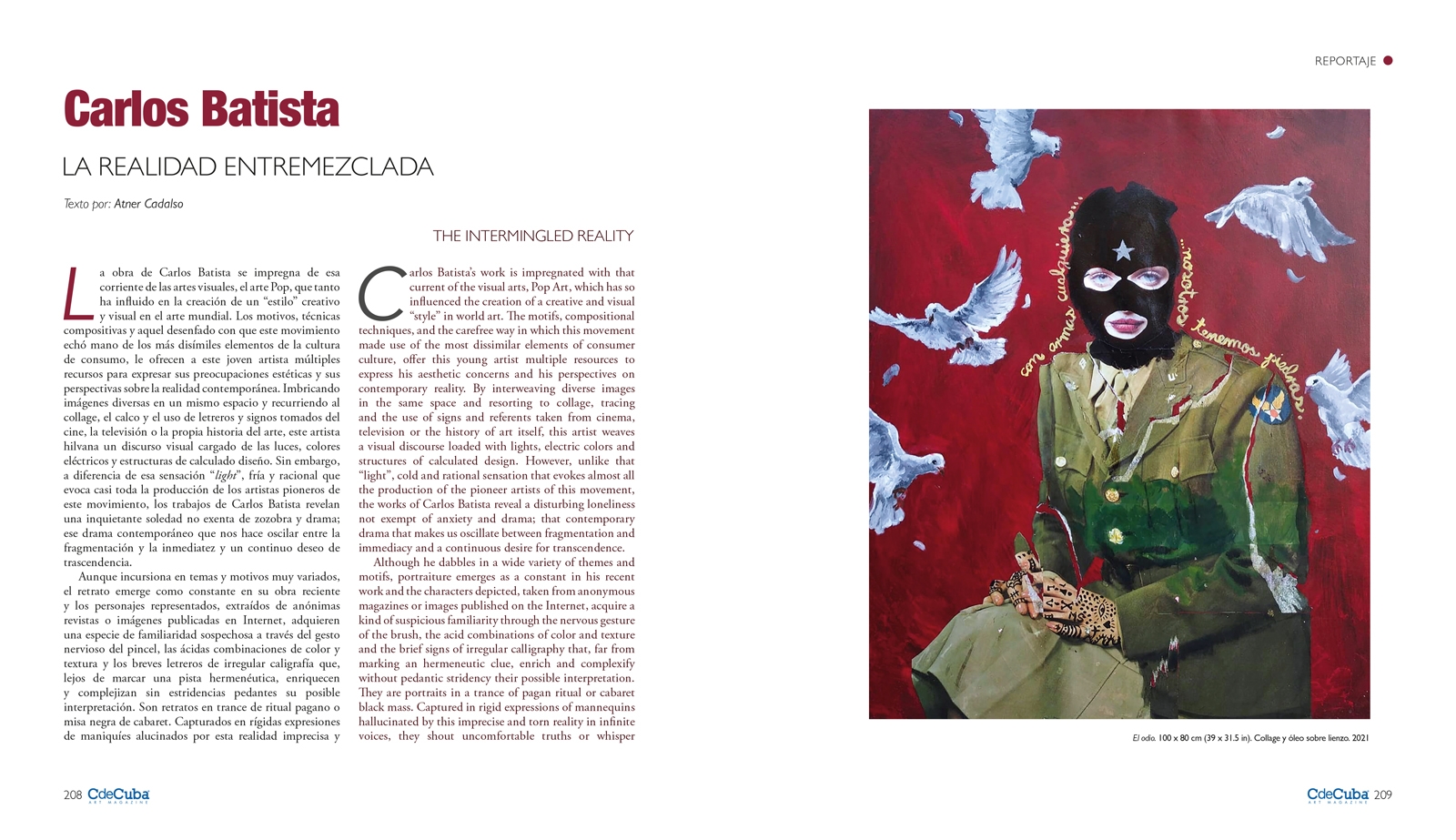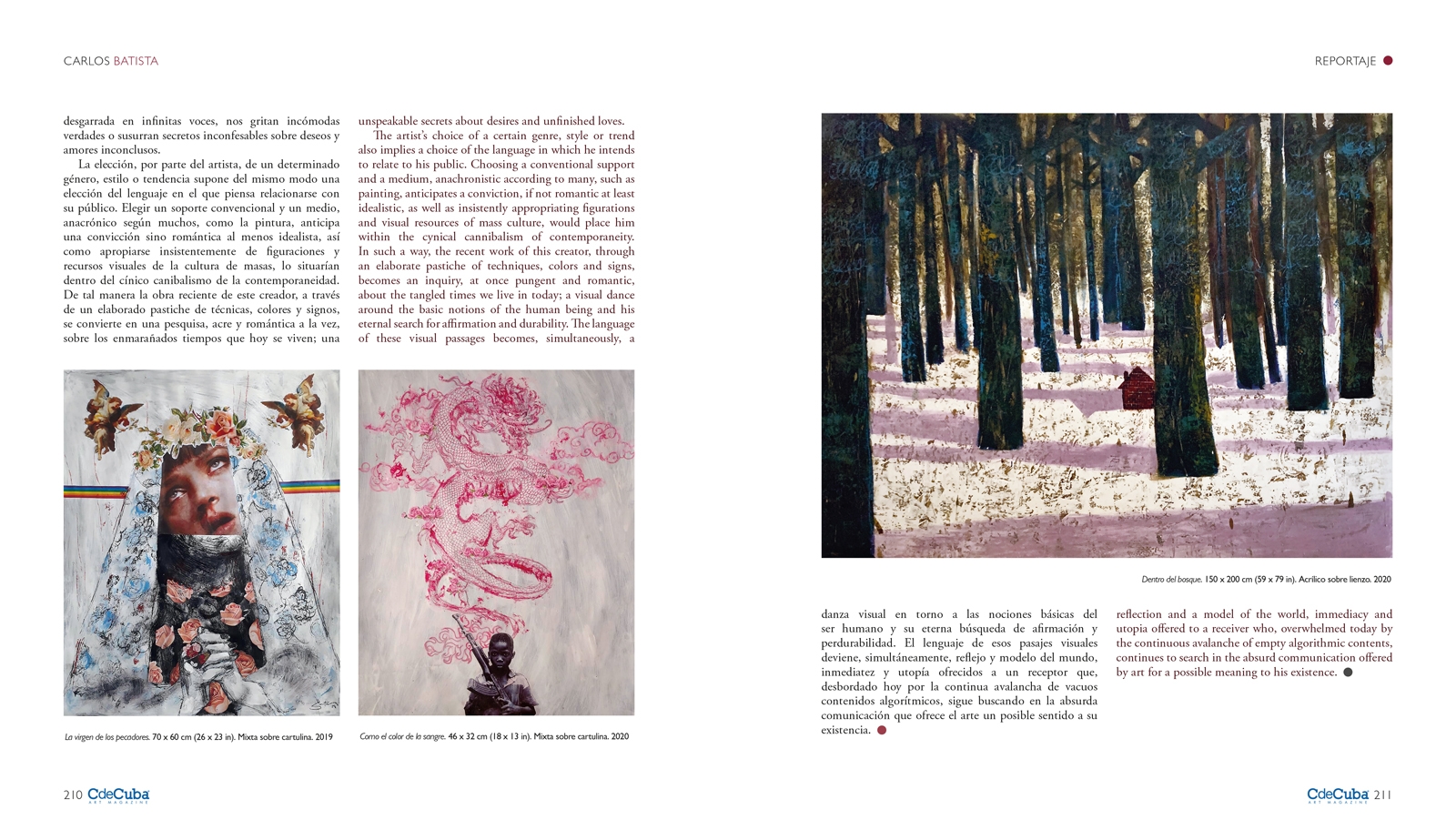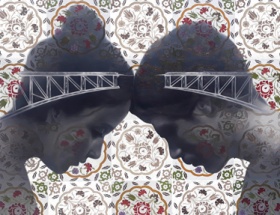The Intermingled Reality
By Atner Cadalso
Carlos Batista’s work is impregnated with that current of the visual arts, Pop Art, which has so influenced the creation of a creative and visual “style” in world art. The motifs, compositional techniques, and the carefree way in which this movement made use of the most dissimilar elements of consumer culture, offer this young artist multiple resources to express his aesthetic concerns and his perspectives on contemporary reality. By interweaving diverse images in the same space and resorting to collage, tracing and the use of signs and referents taken from cinema, television or the history of art itself, this artist weaves a visual discourse loaded with lights, electric colors and structures of calculated design. However, unlike that “light”, cold and rational sensation that evokes almost all the production of the pioneer artists of this movement, the works of Carlos Batista reveal a disturbing loneliness not exempt of anxiety and drama; that contemporary drama that makes us oscillate between fragmentation and immediacy and a continuous desire for transcendence.
Although he dabbles in a wide variety of themes and motifs, portraiture emerges as a constant in his recent work and the characters depicted, taken from anonymous magazines or images published on the Internet, acquire a kind of suspicious familiarity through the nervous gesture of the brush, the acid combinations of color and texture and the brief signs of irregular calligraphy that, far from marking an hermeneutic clue, enrich and complexify without pedantic stridency their possible interpretation. They are portraits in a trance of pagan ritual or cabaret black mass. Captured in rigid expressions of mannequins hallucinated by this imprecise and torn reality in infinite voices, they shout uncomfortable truths or whisper unspeakable secrets about desires and unfinished loves.
The artist’s choice of a certain genre, style or trend also implies a choice of the language in which he intends to relate to his public. Choosing a conventional support and a medium, anachronistic according to many, such as painting, anticipates a conviction, if not romantic at least idealistic, as well as insistently appropriating figurations and visual resources of mass culture, would place him within the cynical cannibalism of contemporaneity. In such a way, the recent work of this creator, through an elaborate pastiche of techniques, colors and signs, becomes an inquiry, at once pungent and romantic, about the tangled times we live in today; a visual dance around the basic notions of the human being and his eternal search for affirmation and durability. The language of these visual passages becomes, simultaneously, a reflection and a model of the world, immediacy and utopia offered to a receiver who, overwhelmed today by the continuous avalanche of empty algorithmic contents, continues to search in the absurd communication offered by art for a possible meaning to his existence.





